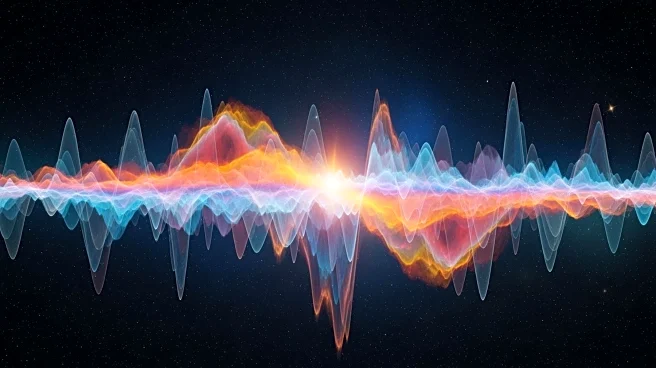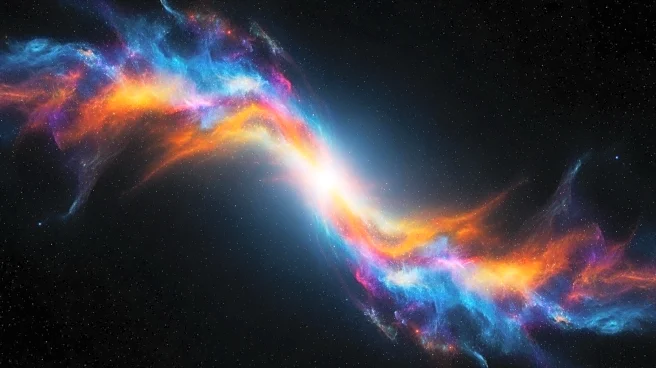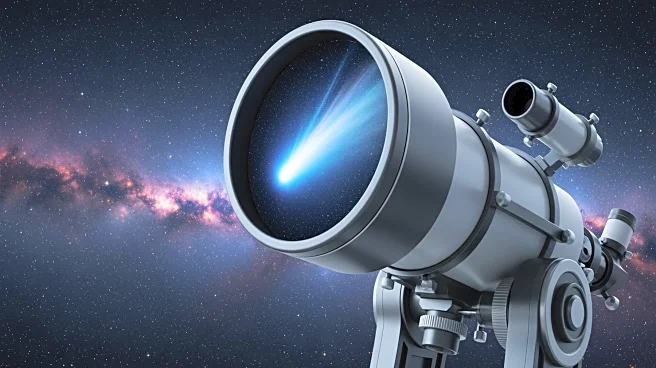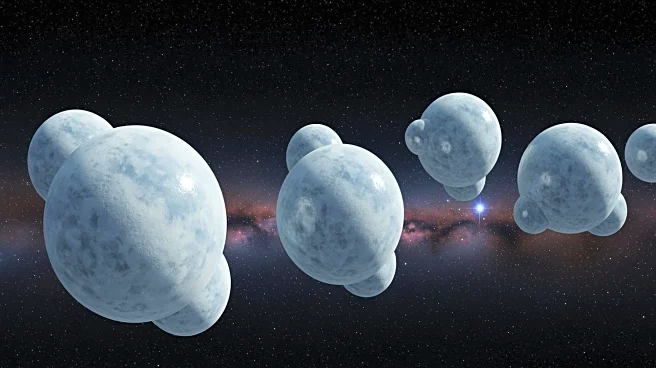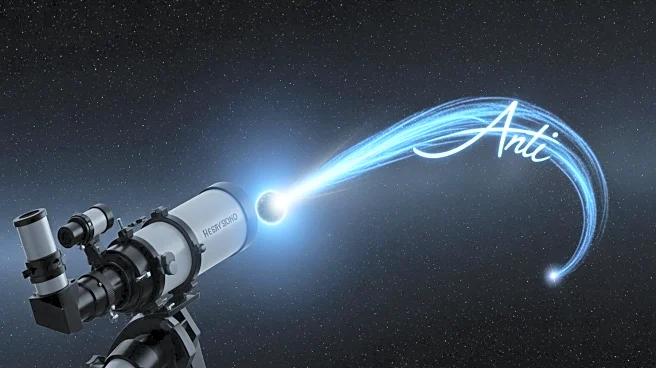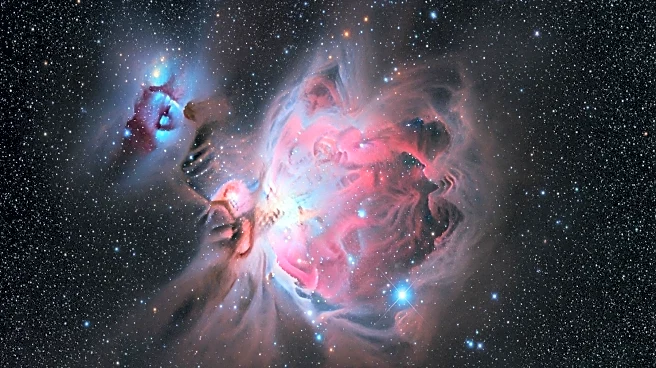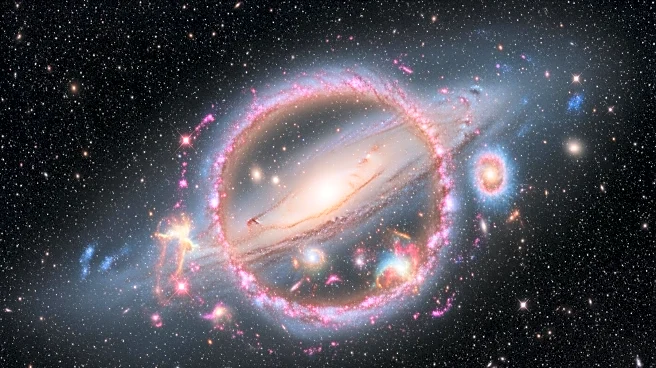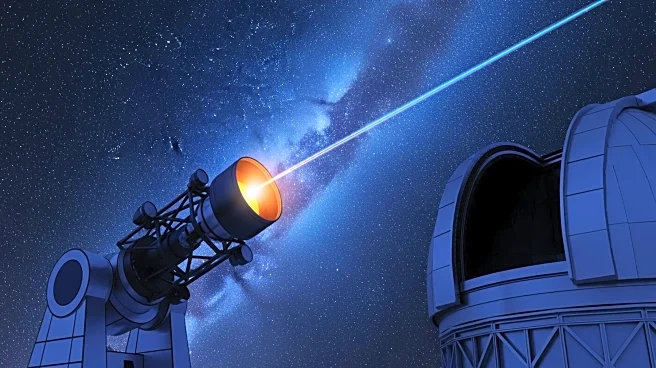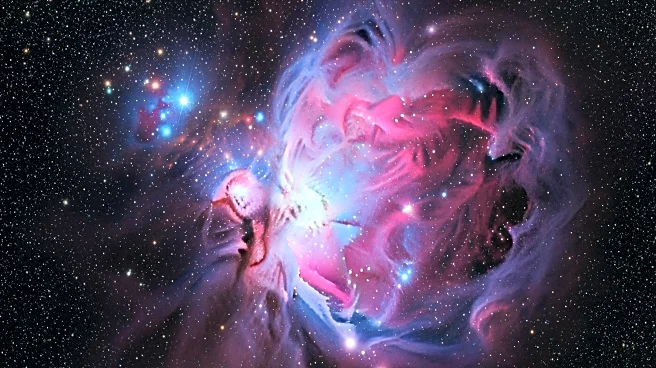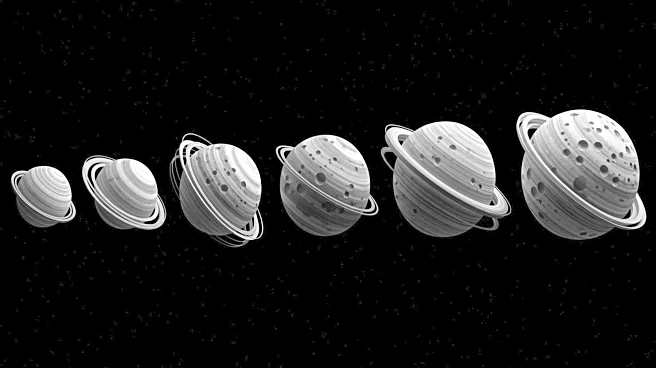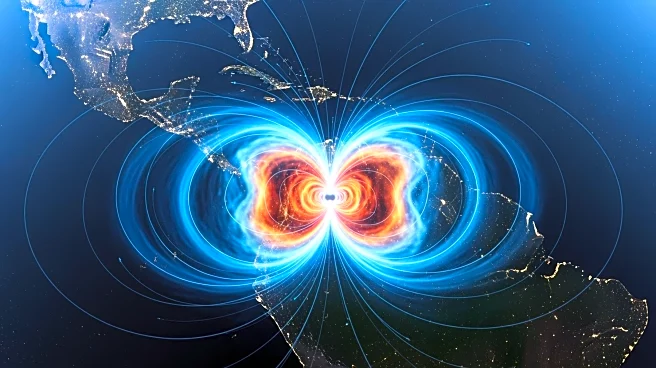What's Happening?
Astronomers have identified a massive wave-like structure within the Milky Way, affecting stars tens of thousands of light-years from the Sun. This discovery was made using data from the European Space
Agency's Gaia space telescope, which has been tracking the speeds and trajectories of stars in the galaxy. The wave, likened to ripples from a rock dropped into a pond, stretches across the galaxy's outer regions, influencing the motion of stars. The phenomenon is illustrated by thousands of bright stars, marked in red and blue, on Gaia's detailed map of the Milky Way. The wave extends over a vast section of the galactic disc, affecting stars located about 30,000 to 65,000 light-years from the galactic center.
Why It's Important?
The discovery of this wave is significant as it provides new insights into the dynamic nature of the Milky Way. Understanding the wave's impact on star motion and formation could lead to advancements in astrophysics, particularly in the study of galactic structures and dynamics. The wave's influence on star formation suggests that gas in the galactic disc may also participate in this large-scale motion, potentially preserving a 'memory' of the wave. This could have implications for understanding the history and evolution of the galaxy, as well as the processes that govern star formation.
What's Next?
Further research is needed to determine the cause of the galaxy's vast oscillations. One hypothesis is that the Milky Way experienced a past encounter or collision with a smaller, dwarf galaxy. The upcoming fourth data release from Gaia will provide even better positions and motions for Milky Way stars, including variable stars like Cepheids, which will help scientists create more detailed maps and advance understanding of these features. Researchers aim to explore the potential link between this great wave and the smaller Radcliffe Wave, which lies closer to the Sun.
Beyond the Headlines
The discovery raises questions about the interconnectedness of galactic structures and the potential for other undiscovered phenomena within the Milky Way. The wave's impact on star motion and formation could lead to a reevaluation of existing models of galactic dynamics. Additionally, the study of such large-scale structures may offer insights into the broader universe, including the behavior of other galaxies and the forces shaping them.
